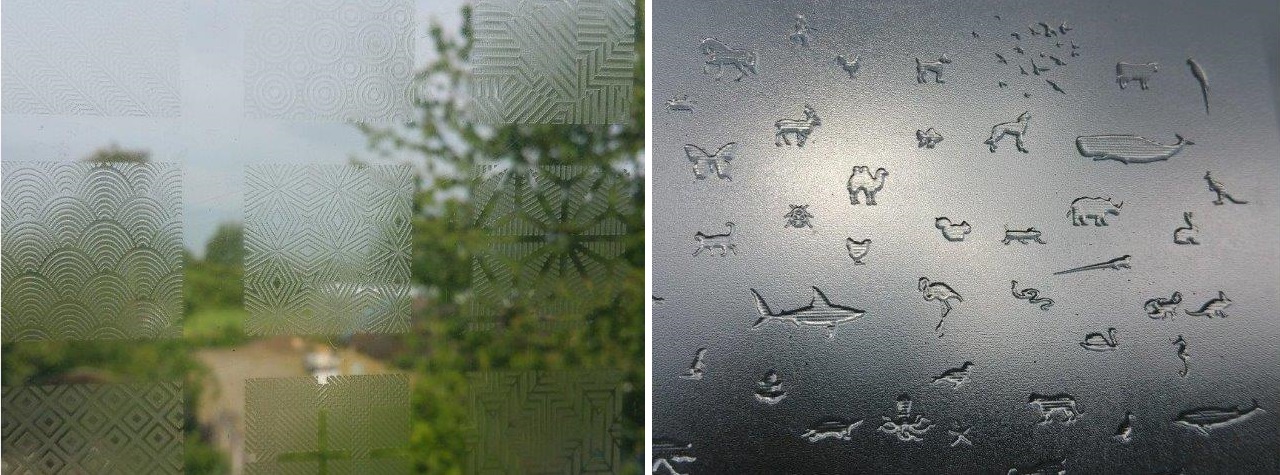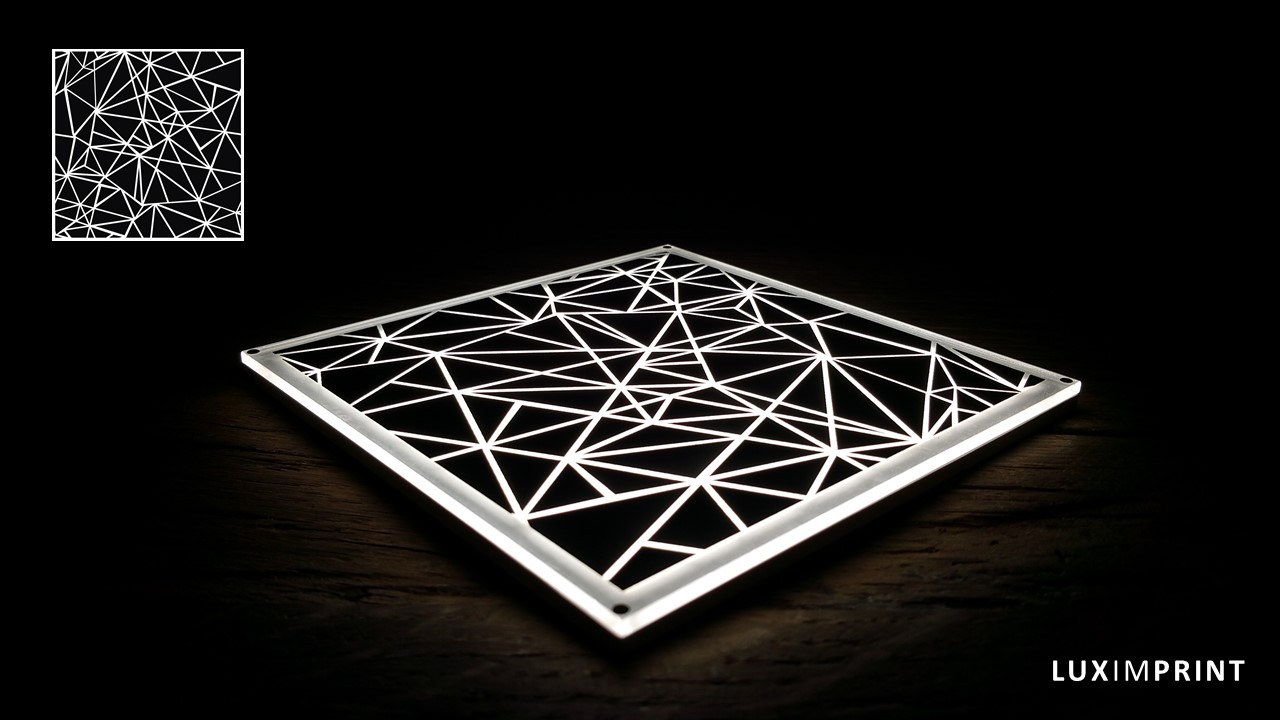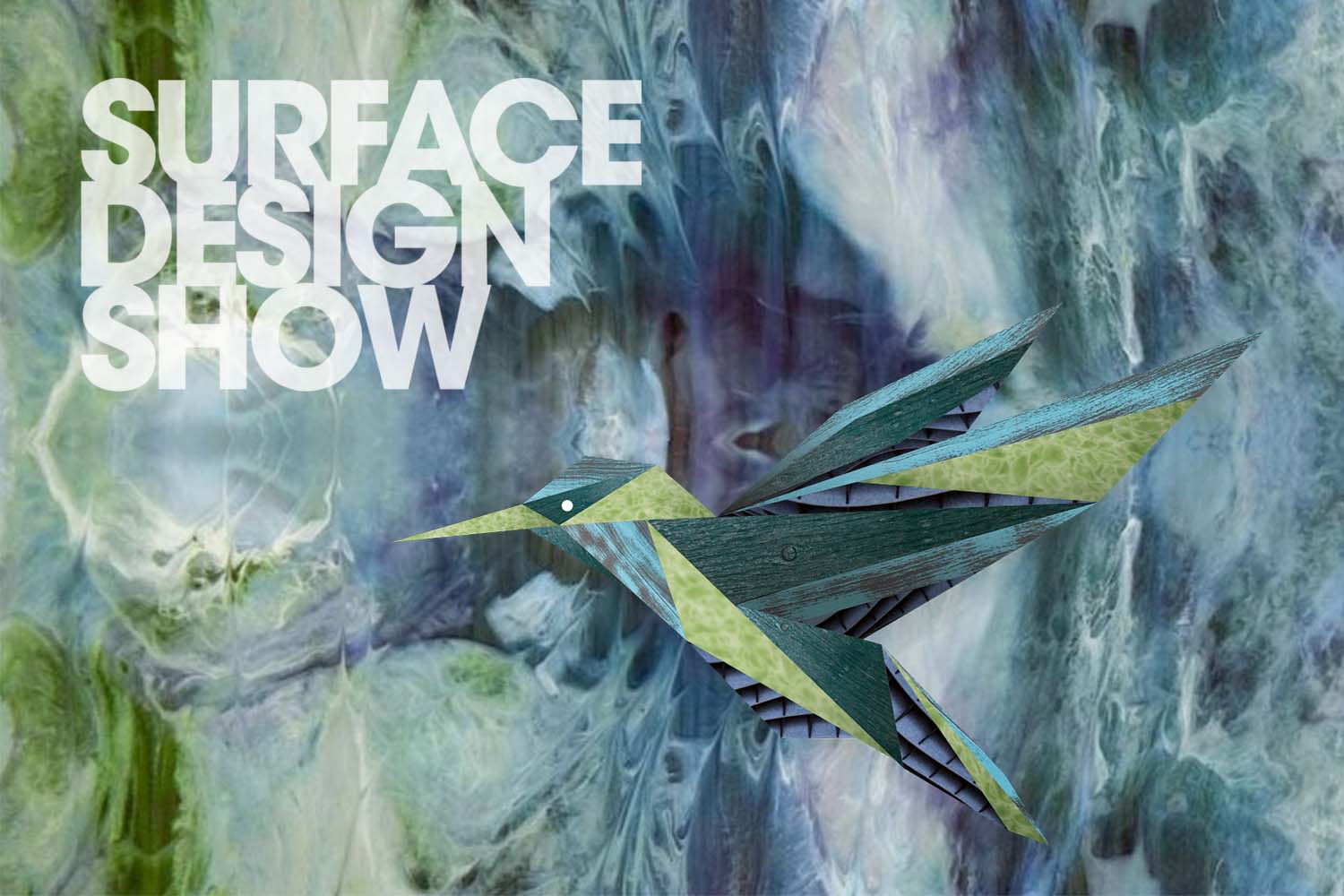Frosted Finishes Application for Even Light Distribution and Smooth Appearance
Luximprint proudly introduces 3D printing of ‘Frosted Finishes’: a new process feature whereby surface structures with a predefined ‘roughness’ are printed, along with clear surface finishes, in one single process. This new process feature greatly enriches the variety of products we 3D print for our users, as we can now add a next dimension to it: diffusivity.
Frosted Finishes by Luximprint
As a result of on-going process optimization, we are delighted to introduce our ‘Frosted Finishes’ capabilities. Combining printed micro-structure expertise with sheet- and thinfilm capabilities, we have defined a range of surface finishes we can apply to various products we print.
By doing so, we can either define a ‘smooth’ surface finish that offers optimal smoothness, clarity, and performance or on the contrary, apply ‘frosted’ surface finishes. This actually results in an undefined or defined scattering of light aiming for better light control, reflectivity, source hiding, efficiency and finally also aesthetics.
Surface Finish Application Capabilities
Roughly, we can break down Luximprint Frosted Finishes into two application categories:
1) Functional Frosted Finishes
Depending on what definition of roughness is chosen, light rays get ‘broken’ and start to move in all possible directions, rather than being directed to a certain target specifically. As such, the structure may create elliptical, (a)symmetric beams or serve color mixing needs.
Some practical examples of applied functional frosted finishes are 3D printed (matte) reflectors, printed diffusers and light guiding plates for applications in general lighting, automotive lighting or retail lighting.
2) Aesthetical Frosted Finishes
From an aesthetic point of view, on the contrary, frosted finishes can be applied onto sheets or thin-films that are intended for decorative applications. As such, the finish does not have a direct function, the structure absorbs the light and emits it into undefined directions, or illuminates a certain predefined area.
Example of aesthetic frosted finish applications are window decorations (window shields, divider walls), privacy films (office spaces, shower walls, front doors) or decorative luminous patterns. When properly illuminated, either by sun or artificial light, the structures come to life and creates stunning effects.

Frosted finishes can be applied to a large variety of acrylics and window films to enhance appearances or to ensure privacy.
Frosted Finishes: Understanding The Terminology
Now that we’ve learned what types of surface finishes are available at Luximprint and how they can be applied, we can begin to understand how they are defined and measured, what might be interesting to know before adoption.
The correlation between the units of measure used to define frosted surface finishes and how they compare to for example mold roughness is a commonly raised question in our user group. Here in Europe, we are accustomed to the standard of measurement for defining mold surfaces, such as Roughness Average (RA) and Root Mean Square (RMS) values, but elsewhere in the world (such as in the US) they might be used to the definitions as set forth by the Society of the Plastics Industry (SPI).
As far as our knowledge reaches, no charts exist that lay these units of measure side by side in a conversion format so that companies can confidently understand what they are dealing with. That’s what attempt to produce with launching our definition of ‘Frosted Finishes’ by our additive optics manufacturing processes. Our process is different, a future way of fabrication, so is the definition of our capabilities.
RA and RMS Values – A Gray Area
How do these values relate? And what do they mean exactly? As commonly known, ‘surface profiling’ or ‘roughness’ is a kind of ‘gray area’. Therefore, it would make sense to build first some kind of reference framework to help you understand how the RA and RMS are defined and measured, and then what it means for you as user of our services.
“RA” is defined as the ‘arithmetic average deviation of the surface valleys and peaks’ and is usually used to describe the roughness of a surface. In most cases, this is related to conventional machining technologies. In fact, it is identical to the ISO measurement known as “center line average” (CLA) and also is equal to the arithmetic average mentioned before. The term “RA” has simply taken over as the term of preference over the others.
“RMS” is defined as the ‘root mean square’ average of the profile height deviations from the mean line of the surface. In the world of optical plastics, it is mostly used to describe the smoothness of an optical surface. Both of the measurements are expressed in micrometers, the symbol of which is this: µ”.
To learn about the possibilities for your custom project and obtain specific finish data, please contact our sales engineering team!
Fortunately, the science behind frosted finishes can be left to a qualified engineer who can help achieve the surface finish that best matches his customer requirements or the mold tool to be ordered. Our ‘Materials Sheet’ and defined ‘Frosted Finish Samples’ can be of great help here!

















